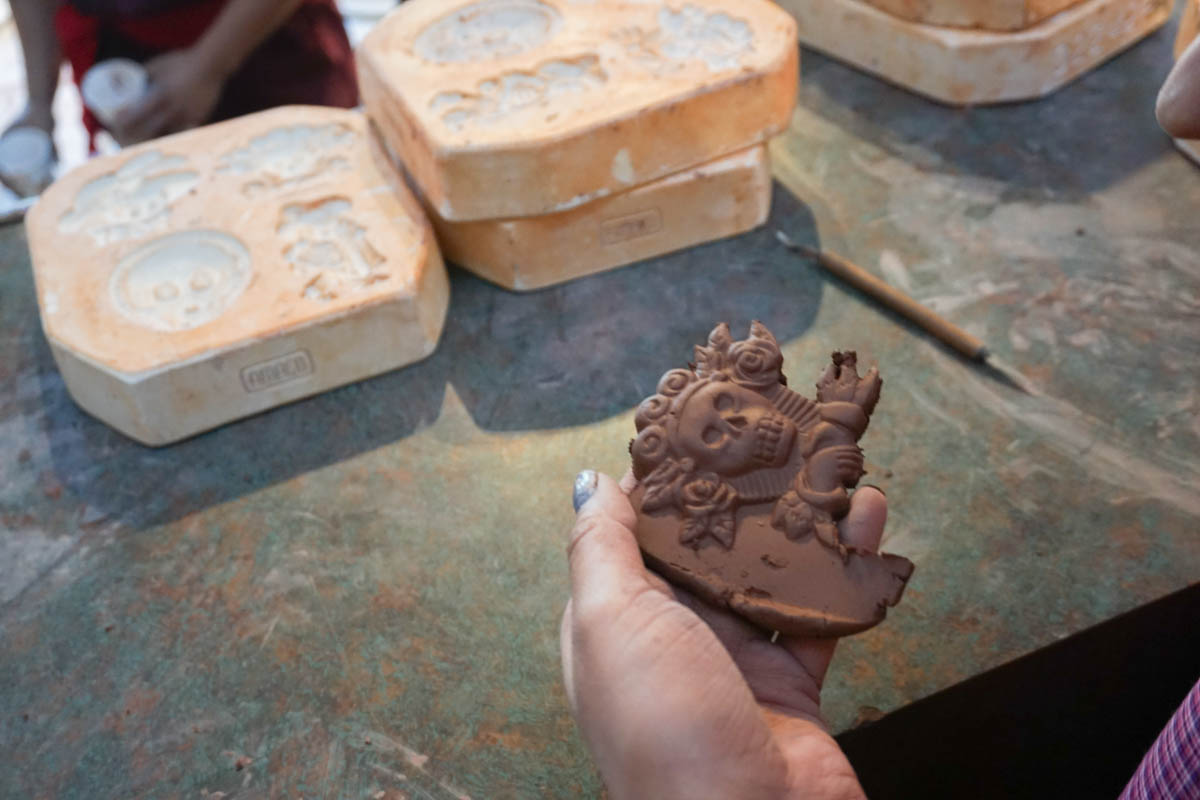
CeAtl Tonalli started early Saturday to set up a traditional altar at Daybreak Star Cultural Center in Seattle in preparation for paquini yancuic xihuitl — a happy new year.
Saturday and Sunday’s celebration of the new year in the Mexica calendar — the Aztec calendar — lasted through the night until the next morning. It would be a sleepless and sage-filled night for the participants of this new year tradition. As darkness fell, members prayed until the morning light, setting the stage for the traditional dancing to begin.
Traditional Mexica dance groups joined CeAtl Tonalli in their ritualistic new year celebration and help teach the community about the indigenous wisdom within the Aztec calendar. CeAtl Tonalli, which was founded in 2004, has been celebrating and dancing for the Mexica new year since 2007.

The Mexica are the indigenous people of the Aztec empire, they are also the ancestors of all modern day Mexicans.
Esmael Xiutecpatl, the captain of CeAtl Tonalli, said although all Mexicans come from the Mexica people, identifying as Mexica is something that cannot be forced and the categorizing of one race in general is an Anglo-European way of thinking, as is ignoring it.
“Its a culture, a philosophy,” he said. “One can ignore their identity because we were colonized, and we continue to be colonized — that is why we give our kids names like Juan and not Mixcoatl. But that is the work we are doing, to wake up Mexicans, that we have indigenous blood.”

CeAtl Tonalli, the Seattle Mexica dance group also known for dancing in the May Day parade every spring, prepared months in advance for this new year celebration. In Mexico, the Mexica new year is celebrated on March 12, but because seasons in the Pacific Northwest are extended and the days get darker earlier, the group waited a week after Daylight Saving Time to celebrate on March 18 and 19.
CeAtl Tonalli welcomed eleven other dance groups, which came from Oregon, California and directly from the place where the birthplace of contemporary Mexica dance reemerged — Queretaro, Mexico.
“Every dance group has its own ceremonies and we go to theirs and when ours comes around they come to ours,” Xiutecpatl said.
Over 100 individual dancers showed up to this year’s festivities, welcomed by a banquet of traditional foods including chile verde, mole, arroz, beans, posole verde and mole de olla. The food was enough to serve them and the numerous onlookers.
The two-day event featured workshops where people could learn about their roots. Adults and children could participate in clay crafts taught by a Mexican artisan, followed by a workshop on the ancient calendar used by the Mexica people, otherwise known as Aztecs.
The Mexica calendar consists of two calendars called the tonalpohualli which is 260 days and the xiuhpohualli which is 365 days long.
Hector Ortiz traveled from Mexico City to Seattle’s celebration, to dance and present the calendar workshop.
He said because of the destruction of sacred relics during the Spanish conquest, much is still unknown about what the calendar shows. To this day, academics still do not know how the tonalpohualli calendar was used, but an elder at the event said it can be used to dictate anything from the character of a person (like zodiac signs) to the vibe of the day.
“I want to share with you guys the time frame of our ancestors,” said Ortiz before going into full detail about the intricate solar calendar known as the xiuhpohualli and its many meanings.
The xiuhpohualli is dictated by the seasons, where the year ends at the end of winter and begins in spring. The calendar, unlike the Gregorian calendar used in Western culture, is divided into 18 20-day periods. The last five days of the year are meant for self reflection and meditation and are called “dead days.”
The calendar contains four eras, a 13-year cycle and like the days of the month, each year is represented by a different insignia from nature.
This new year leaves behind tecaptl, the year of the flint knife, and ushers in calli, the year of the house.
“The energy of the years are very influential and effects everyone,” said Tonantzin Fernandez-Diaz an elder and captain of a dance group which came from Mexico.
Tecaptl is a year of ideas, awareness, and information, but also of conflict and controversy, while calli is the year of community and self protection. The house represents the individual, the family, or any symbolic receptacle of energy.
“The understanding of this new year that will accompany us, especially here with whats going on politically, is for us to be aware of the protection we need in our homes,” Ortiz said. “This year implicates unity and strength within our families.”



Happy beginning of Spring!
Happy Persian New Year! Nowruz!
Happy Aztec New Year!
Thank you for an informative and insightful article.
That was interesting…I loved the photos. I wish I could have seen the dancing in person, it is beautiful.
Thanks for sharing what some immigrants forget by moving to another country. I will definitely felt more in sync with my roots!
That was interesting…I loved the photos. Thanks for sharing